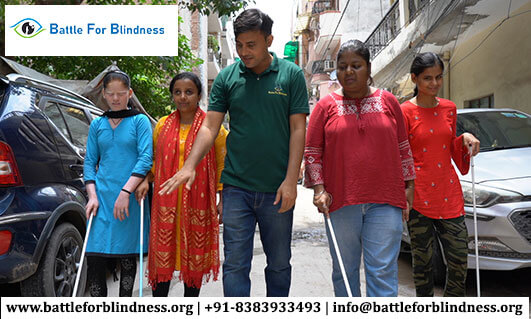
In today’s digital age, inclusivity is not just a buzzword but a fundamental necessity. For visually impaired girls, the internet can be both a gateway to opportunity and a barrier to accessibility. By designing digital platforms with inclusivity in mind, we can empower visually impaired individuals to access information, education, and opportunities without obstacles.
Why Inclusivity in Design Matters
According to the World Health Organization (WHO), an estimated 295 million people globally have moderate to severe visual impairments. Among them, visually impaired girls often face unique challenges due to intersecting barriers of gender and disability. Inclusive design ensures that digital platforms cater to diverse needs, creating a level playing field for all users.
Principles of Inclusive Design for Accessibility
-
Perceivable Content
-
Use screen-reader-friendly HTML tags.
-
Include alt text for all images.
-
Avoid using images or graphics as the sole means of conveying information.
-
-
Operable Interfaces
-
Design navigation that works seamlessly with keyboard shortcuts.
-
Ensure touch targets are large enough for users with motor impairments.
-
-
Understandable Interfaces
-
Use simple and clear language.
-
Provide audio descriptions and captions for multimedia content.
-
Offer text resizing and contrast adjustment options.
-
-
Robust Compatibility
-
Test websites with screen readers such as JAWS or NVDA.
-
Ensure compatibility with various assistive technologies and browsers.
-
Key Features to Include in Accessible Digital Experiences
-
Voice Navigation: Incorporate AI-driven voice assistants that help visually impaired users navigate platforms without needing visual cues.
-
Text-to-Speech (TTS) Integration: Allow text content to be read aloud, aiding comprehension and reducing dependency on others.
-
Braille-Compatible Devices: Develop solutions compatible with refreshable braille displays.
-
Interactive Tutorials: Provide step-by-step audio guides to help users navigate new apps or websites.
Trending Accessibility Tools and Technologies
-
Artificial Intelligence (AI): AI-powered tools such as Optical Character Recognition (OCR) can convert printed or handwritten text into digital formats accessible to screen readers.
-
Augmented Reality (AR): AR applications can describe surroundings to visually impaired users, offering greater independence.
-
Wearable Devices: Smart glasses and wearable technologies are increasingly bridging gaps in accessibility.
Real-World Examples of Inclusive Design
-
Microsoft’s Seeing AI App: This app narrates the world around the user, describing people, objects, and text in real time.
-
Apple’s VoiceOver: A built-in screen reader that makes Apple devices fully operable without visual interaction.
-
Accessible E-Learning Platforms: Organizations like Bookshare provide accessible digital textbooks, breaking educational barriers for visually impaired girls.
Benefits of Inclusive Design for Businesses
Designing for inclusivity doesn’t just benefit end users; it’s also a strategic advantage for businesses:
-
Broader Audience: Reaching millions of users with disabilities expands market opportunities.
-
Positive Branding: Demonstrating social responsibility fosters goodwill and enhances brand reputation.
-
Legal Compliance: Adhering to accessibility laws like the ADA (Americans with Disabilities Act) avoids potential litigation and fines.
Advocacy and Community Support
Creating accessible digital experiences goes beyond technology. It requires advocacy and collaboration:
-
Partner with organizations that support visually impaired individuals to understand their needs.
-
Promote digital literacy among visually impaired girls, equipping them with skills to navigate technology.
-
Raise awareness about the importance of accessibility through campaigns and workshops.
The Path Forward
Inclusive design is a journey, not a destination. By embracing innovative technologies and adhering to accessibility standards, we can create digital experiences that empower visually impaired girls to thrive in a connected world. Let us build a future where everyone, regardless of ability, has equal access to the opportunities the digital world offers.





